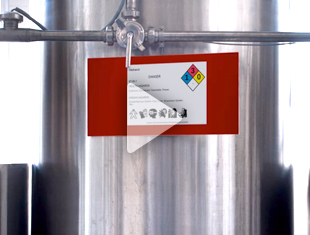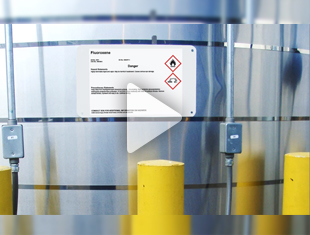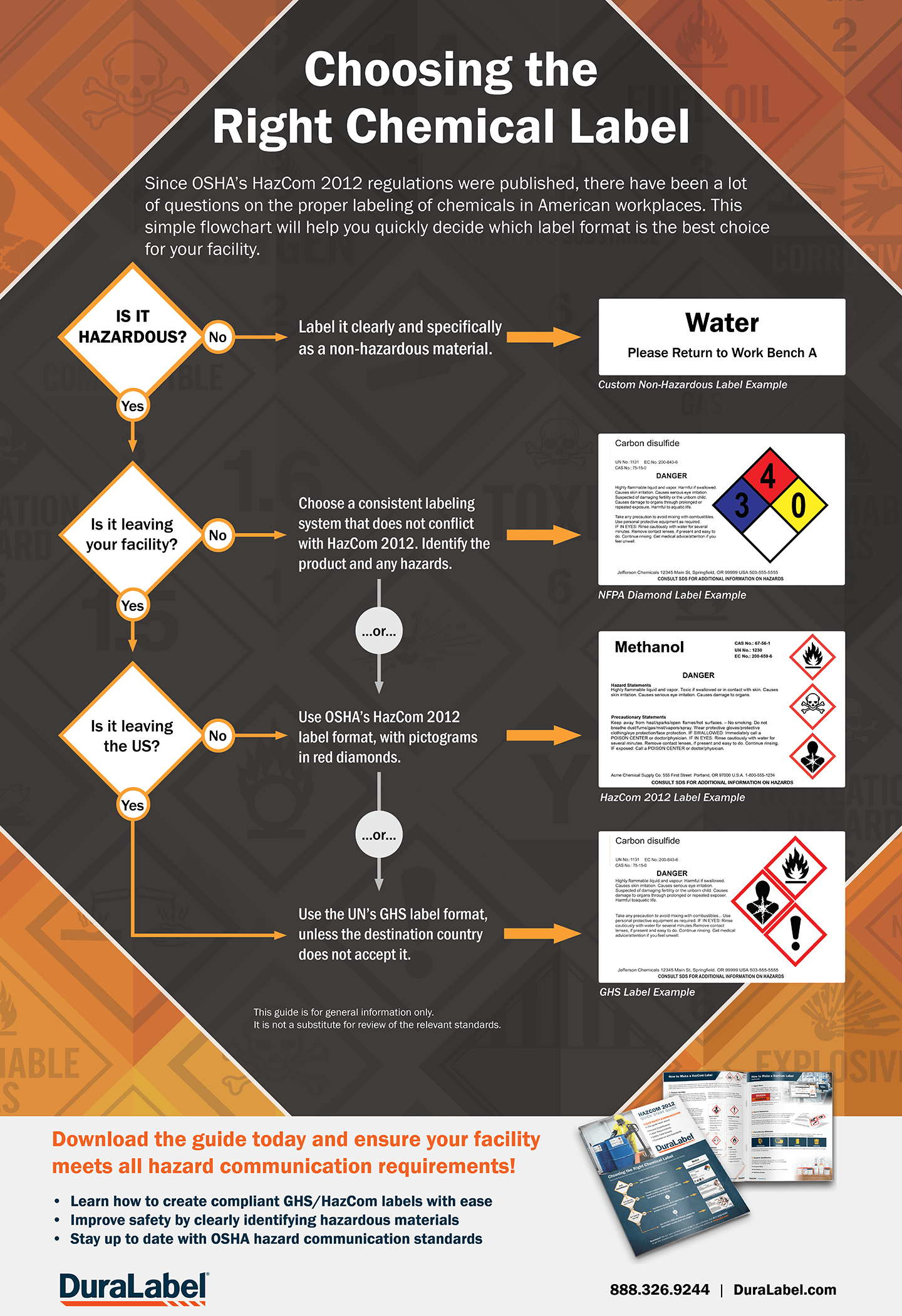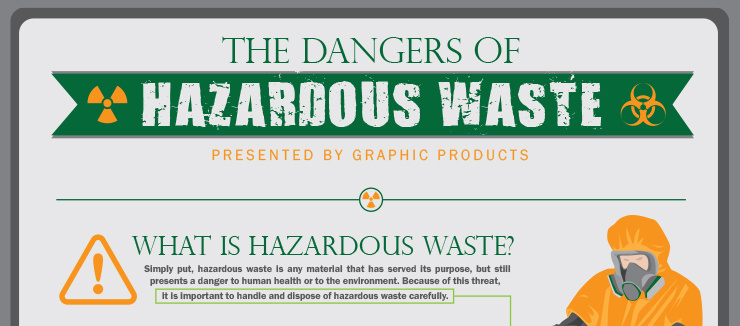HazCom/GHS
Stay compliant with hazard communication (HazCom) standards. Access resources on labeling, SDS management, and best practices for chemical safety.
Popular Resources

What is HazCom? Your Guide to Chemical Labeling, GHS, & OSHA Standards
What Is OSHA’s Hazard Communication Standard (HazCom)? "HazCom" is short for "Hazard Communication," OSHA’s ...
Read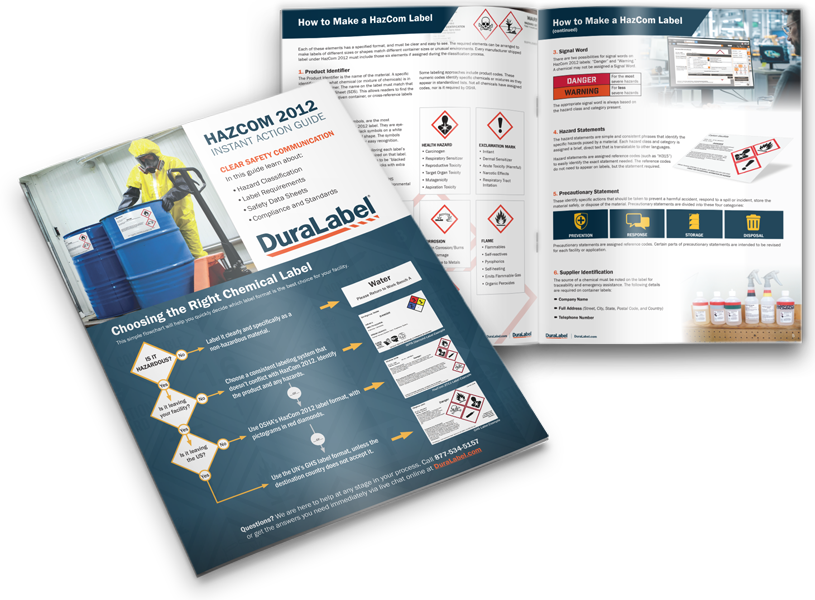
GHS/HazCom Labeling Quick Start Guide
This quick start guide offers essential knowledge on hazard communication best practices to help you properly ...
Download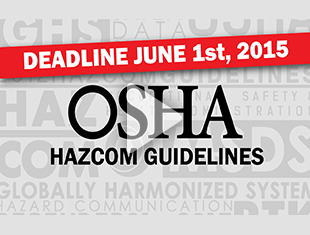
OSHA Hazard Communication and HazCom 2012
There've been a lot of questions surrounding OSHA's Hazard Communication, or HazCom 2012 guidelines- let's ...
Watch Now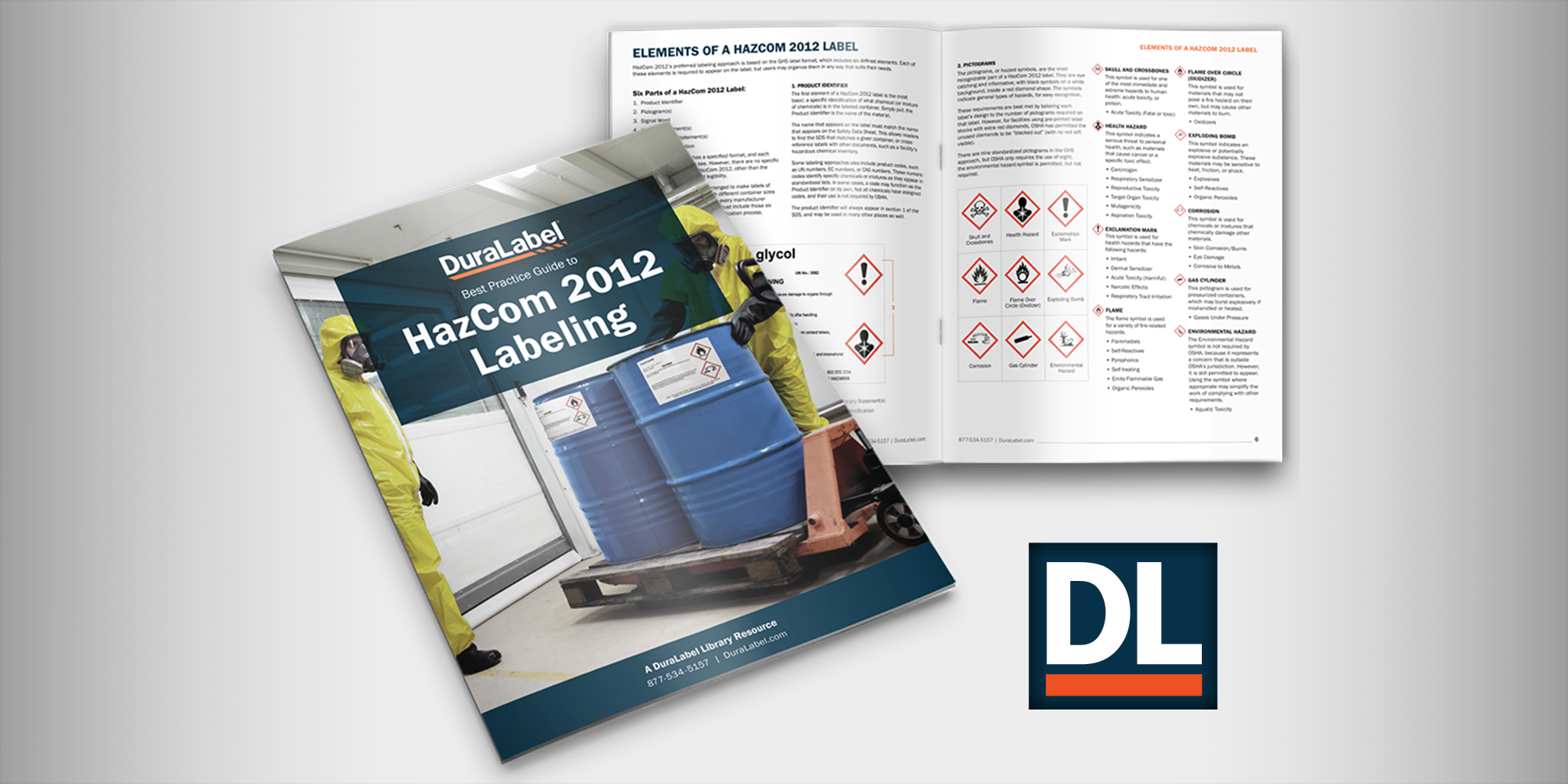
HazCom 2012 Labeling Best Practice Guide
This 12-page guide is a critical resource for improving safety around hazardous chemicals while ensuring ...
DownloadFree Guides
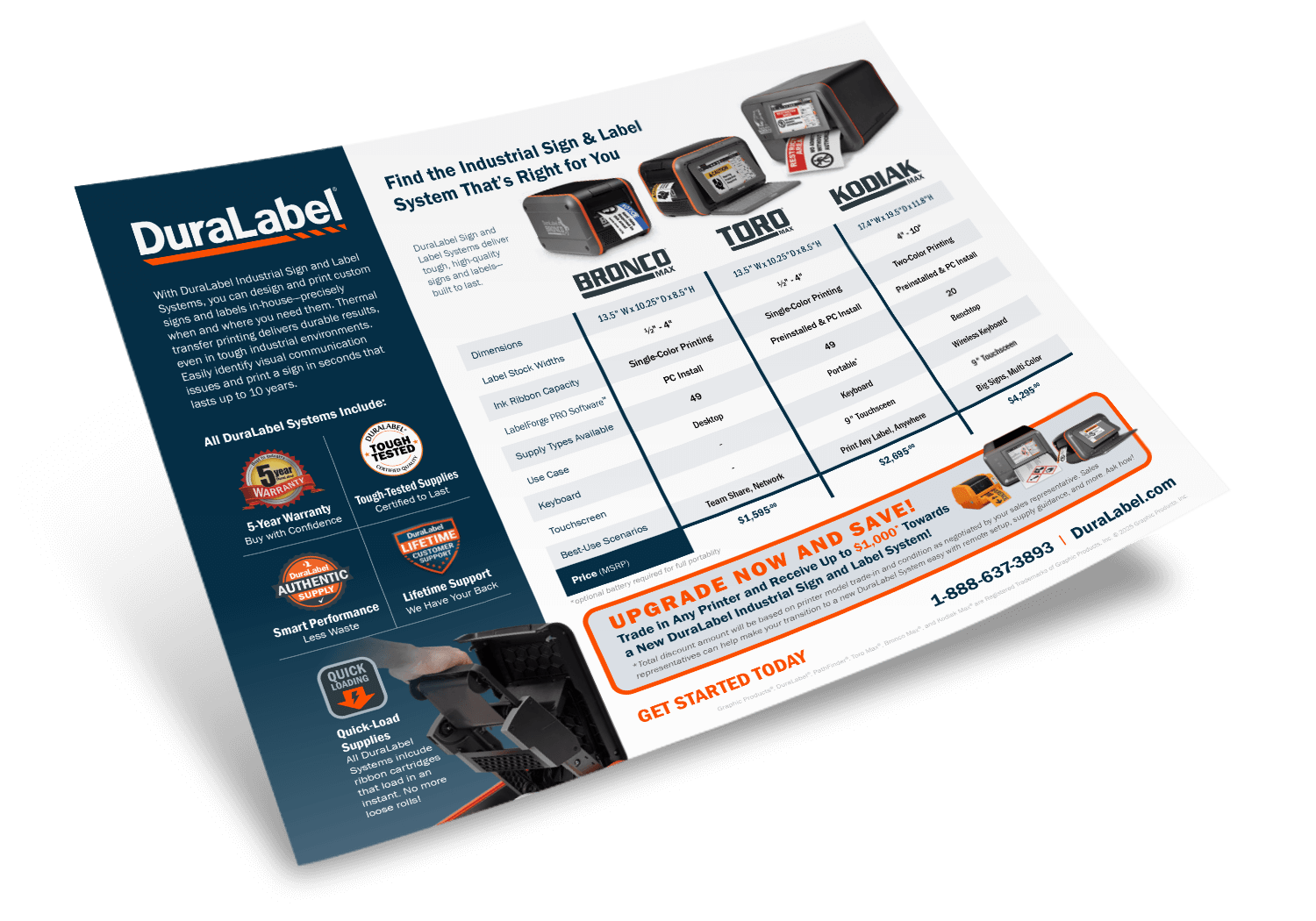
DuraLabel Industrial Sign and Label System Comparison Flyer
Not sure which DuraLabel Industrial Sign and Label System fits your needs? This flyer makes it easy to ...
Download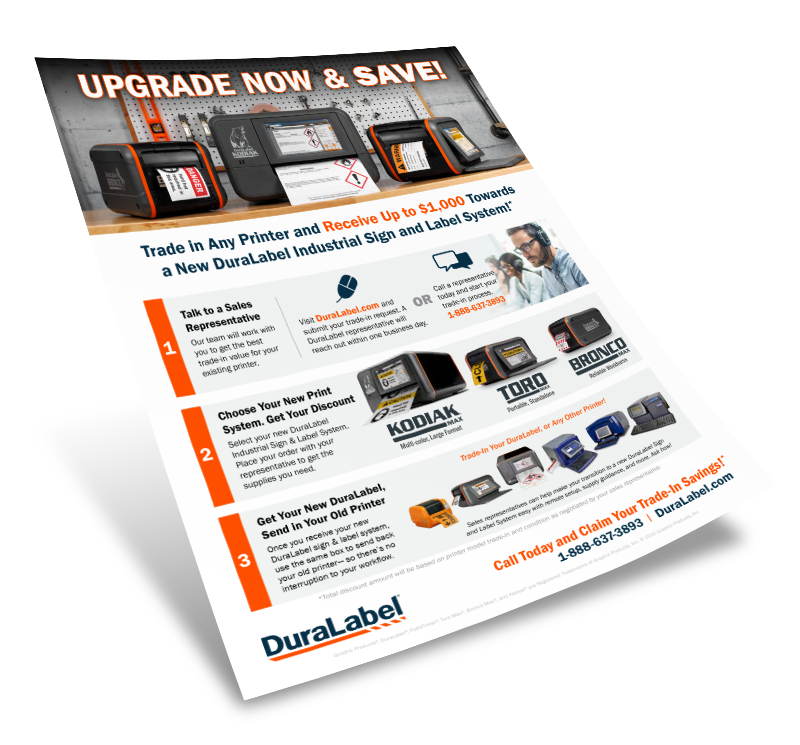
DuraLabel Upgrade Trade-In Flyer
Ready to upgrade your sign and label printer? This flyer explains how to trade in any printer—DuraLabel or ...
Download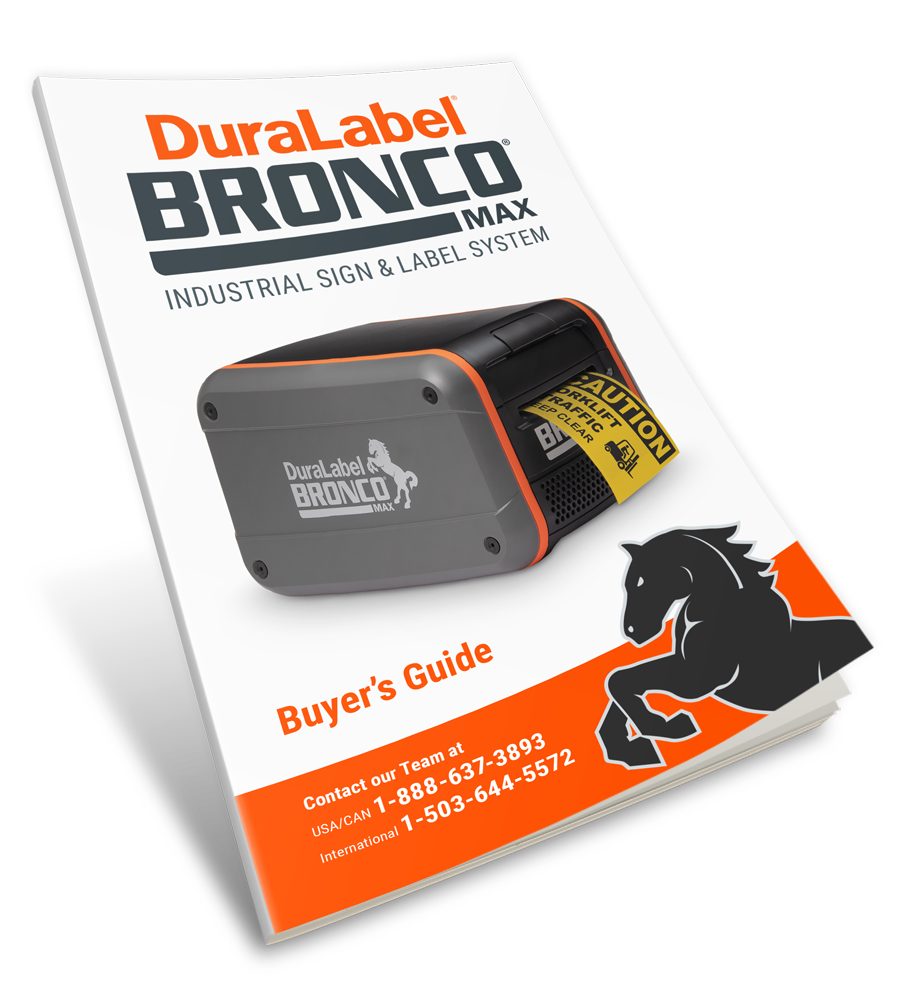
Bronco Max Buyer's Guide
Discover the advantages of a reliable industrial sign and label system built for performance. The Bronco Max ...
Download
DuraLabel Guide to Sign & Label Supplies
This resource covers industrial labeling solutions, compliance standards, and supply recommendations to help ...
Download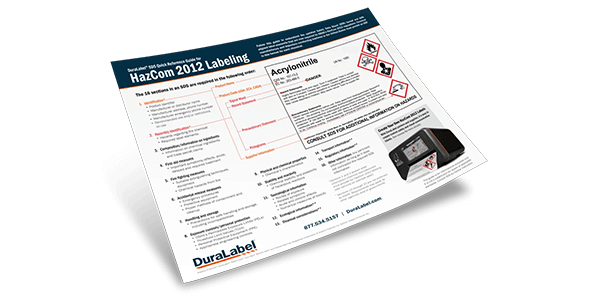
HazCom 2012 Labeling Reference Guide
Stay compliant with OSHA’s HazCom 2012 regulations using this quick reference chart. This essential guide ...
Download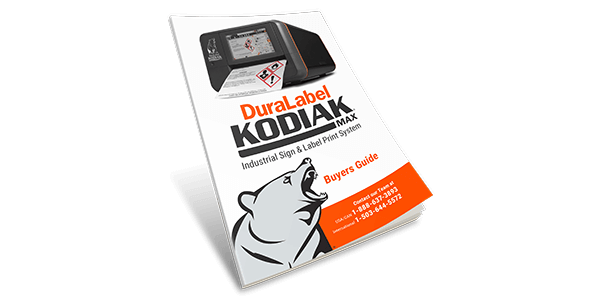
Kodiak Max Buyer's Guide
The DuraLabel Kodiak Max Print System delivers unmatched ease, precision, and durability for in-house sign ...
Download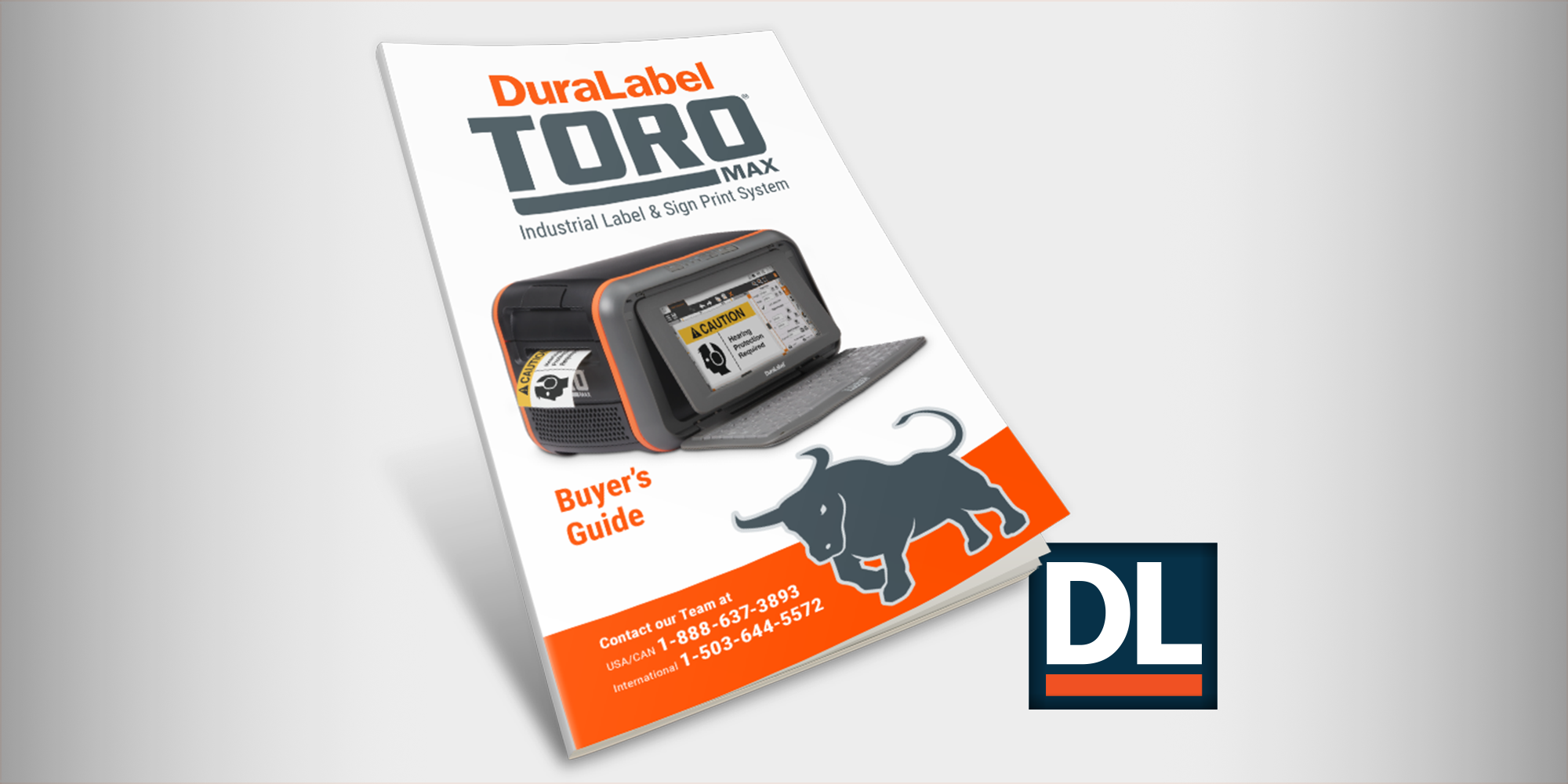
Toro Max Buyer's Guide
Upgrade your facility's labeling process with the DuraLabel Toro Max Print System, designed for on-site ...
Download
GHS/HazCom Labeling Quick Start Guide
This quick start guide offers essential knowledge on hazard communication best practices to help you properly ...
Download
HazCom 2012 Labeling Best Practice Guide
This 12-page guide is a critical resource for improving safety around hazardous chemicals while ensuring ...
Download
Oil & Gas Industry Signage Requirements Guide
This guide explains essential safety labeling and signage requirements for the oil and gas industry. It ...
Download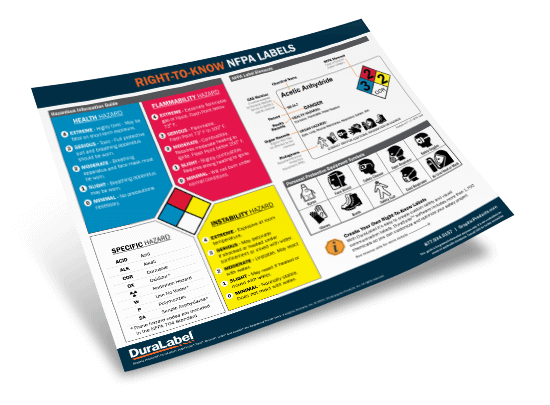
NFPA Diamond Chart
Quickly understand NFPA Diamond labels with this free, comprehensive reference chart. It explains the hazard ...
Download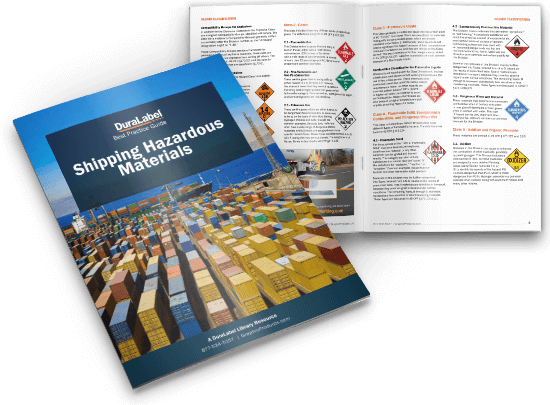
Shipping Hazardous Materials Best Practice Guide
Download Now What does the DOT require for safe transportation of hazardous materials? This guide explains ...
DownloadVideos
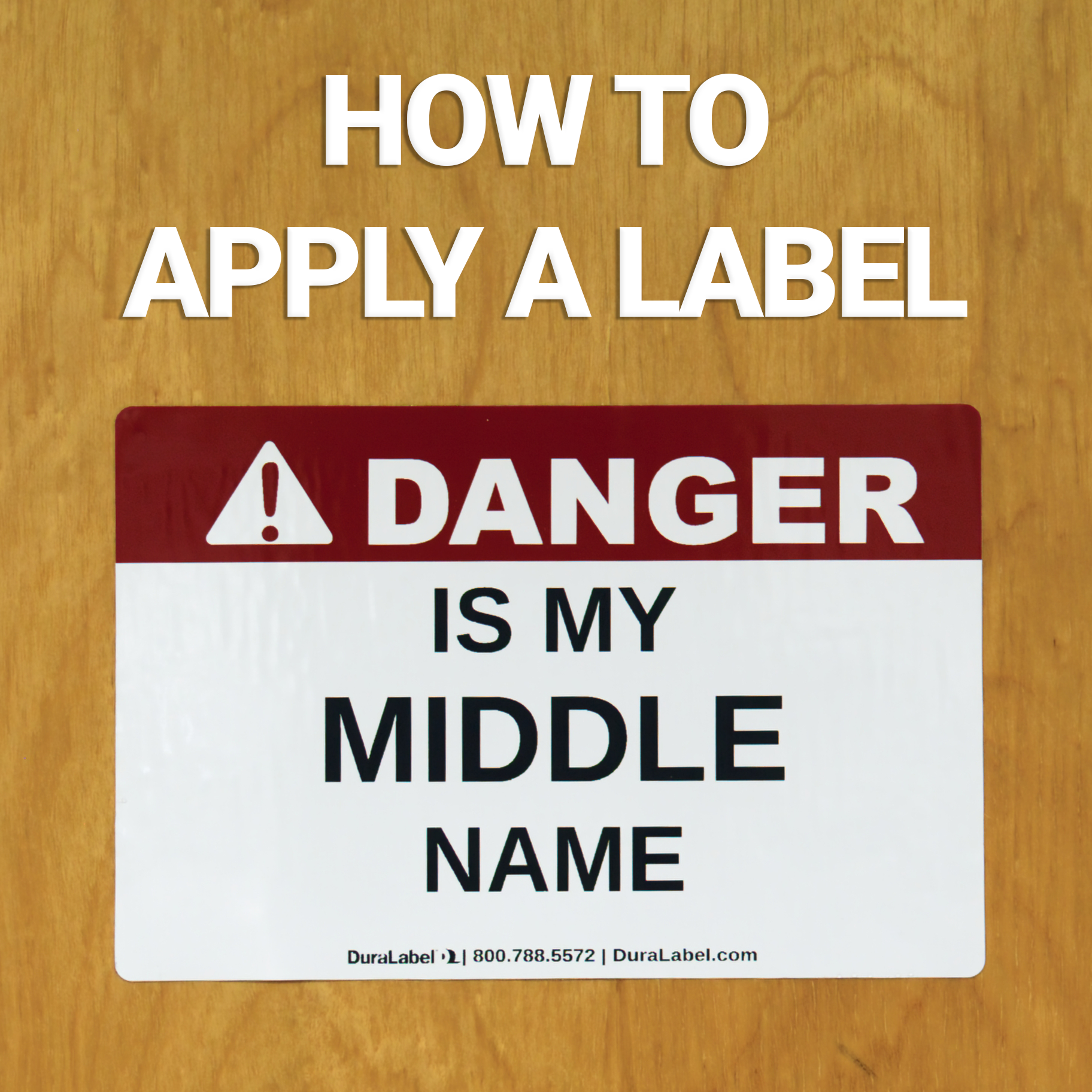
How to Apply a Label
In this video, learn how to achieve a perfect label application every time with DuraLabel. In this quick ...
WATCH NOW
How-To: Data Source Merge in LabelForge Pro
Welcome to our comprehensive tutorial on Data Source Merge in LabelForge Pro, brought to you by DuraLabel! In ...
WATCH NOW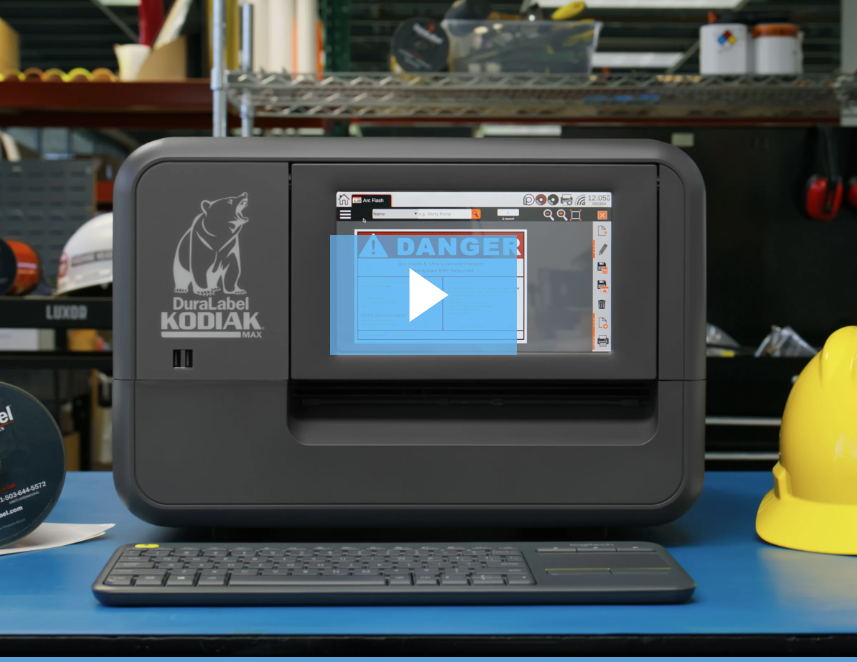
DuraLabel Kodiak Max Industrial Sign and Label System
Take control and bring your labeling in-house with DuraLabel Kodiak Max Industrial Sign and Label System. ...
WATCH NOW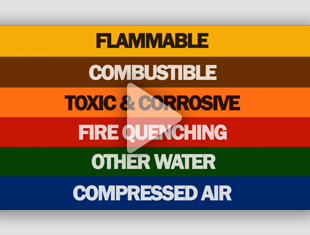
ANSI/ASME Pipe Marking Color Code
Do you know the contents of this pipe? Or that one? Having facility pipes clearly marked with compliant ...
WATCH NOWArticles

6 Industrial Labeling Mistakes to Fix Before Year-End Audits
What Are the Most Common Industrial Labeling Errors That Can Cost Facilities During Audits? As facilities ...
Read
5 Reasons to Upgrade Your Industrial Printer Before the New Year
Why Should Facilities Upgrade Their Industrial Printer Before the New Year? The end of the year is an ideal ...
Read
How Emergency Preparedness Protects Utilities and Energy Operations
Why Is Emergency Preparedness Critical in Utilities and Energy? U.S. businesses and households lose nearly ...
Read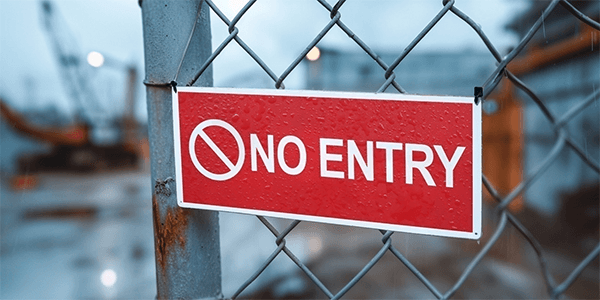
Learn How to Create Custom Safety Signs In-House with DuraLabel
Why Should Facilities Create Custom Safety Signs In-House? Creating clear, compliant signage
Read
Breathe Easier with OSHA Respiratory Protection Labels for Workers
How Can Jobsite Labeling Improve Compliance with Respiratory Protection Standards? Construction work creates ...
Read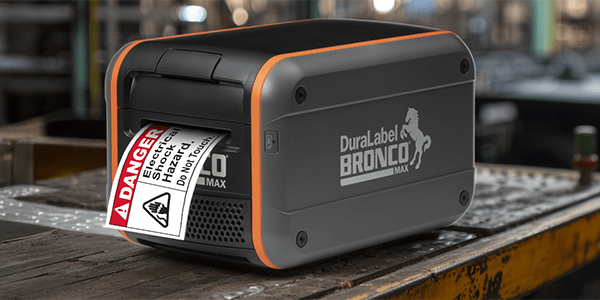
Why Upgrade to the DuraLabel Bronco Max Industrial Sign & Label System
What Makes the Bronco Max a Smart Industrial Labeling Upgrade? Facilities that start with office-grade ...
Read
How to Improve Eyewash Station Safety in Healthcare Workspaces
How to Improve Eyewash Station Safety in Clinical and Lab Settings Our eyes are vulnerable in high-risk ...
Read
Hazard Communication Solutions for a Safer Workplace
A faded label. A missing hazard symbol. An outdated SDS. These small details can trigger big problems in ...
Read
GHS and HazCom Labeling for Medical Facilities
Maintaining safe medical facilities starts with effective hazard communication (HazCom). The Globally ...
Read
HazCom Basics: Chemical Labeling 101
In the regulatory-driven healthcare environment, proper chemical labeling is required to ensure safety and ...
Read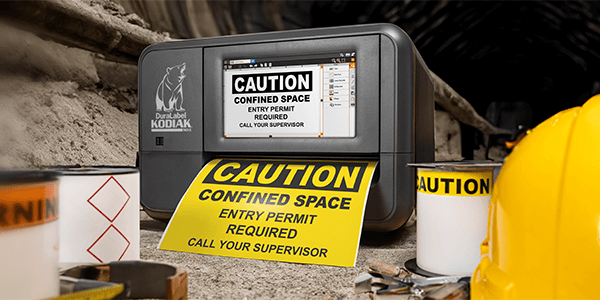
Why Upgrade to the DuraLabel Kodiak Max Industrial Sign & Label System
Why Choose the DuraLabel Kodiak Max for Industrial Labeling Upgrades? Managing a complex facility comes with ...
Read
Why Upgrade to the DuraLabel Toro Max Industrial Sign and Label System
What are the Key Benefits of Upgrading to the DuraLabel Toro Max Industrial Label Printer? In demanding ...
Read
CO2 Cylinder Tanks and the Art of Labeling
Dealing with dangerous substances is a major concern for any workplace. Whether it's chemicals that can burn ...
Read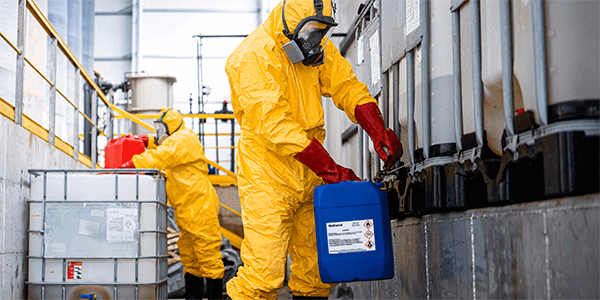
Why Worksites Need an Outdoor Label Printer for Extreme Environments
How Can Labels Stay OSHA-Compliant in Harsh Environments? Labeling for extreme environments while maintaining ...
Read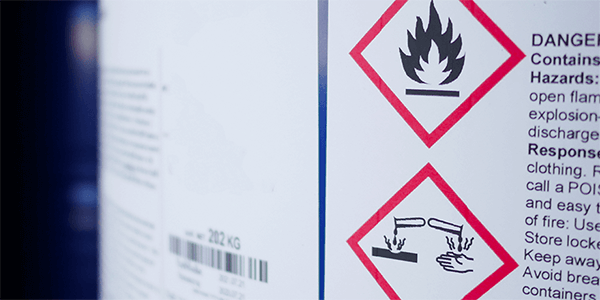
How DuraLabel Systems Improve GHS Labels for Compliance and Safety
How DuraLabel Printers Simplify GHS Labeling for Compliance and Safety In regulated industrial environments, ...
Read
Avoid Costly Mistakes When Shipping Hazardous Materials
Companies fail to meet basic hazardous materials shipping requirements every year. Recently, a Columbus ...
Read
GHS-Compliance: Safe and Effective Storage of Hazardous Chemicals
The Importance of the GHS When working with and storing hazardous chemicals, steps must be taken to ensure ...
Read
Toxic Waste Risks and Management
What is toxic waste? Toxic waste may be defined as discarded material that may pose a substantial threat or ...
Read
OSHA 1910 144 Color Identification
Standard Number: 1910.144 Safety color code for marking physical hazards. 1910.144(a) Color identification - ...
Read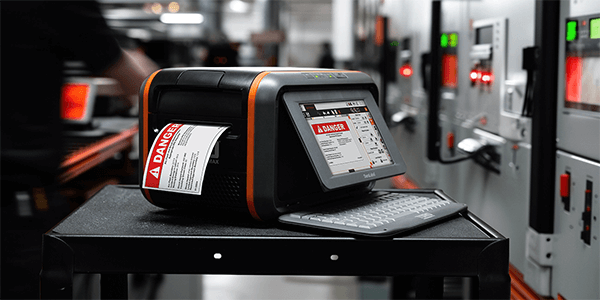
Top 10 Uses for DuraLabel Industrial Label Printers
How DuraLabel Printers are Used Across 10 Key Industrial Applications DuraLabel printers are built to solve ...
Read
NFPA 704
NFPA 704 Labels NFPA 704 - Standard System for the Identification of the Hazards of Materials for Emergency ...
Read
Parts of a Safety Data Sheet (SDS)
Under the international standard called the Globally Harmonized System, or GHS, details about a chemical or ...
Read
Choosing PPE to Protect Against Poisons in the Workplace
Poisons and hazardous chemicals are present in nearly every industry. Farmers and agricultural workers may ...
Read
Permissible Exposure Limit
The OSHA Permissible Exposure Limit (PEL) establishes the upper limit for employee exposure to chemicals or ...
Read
NFPA 704 vs HazCom 2012
A variety of labeling standards and classification systems are available for managing chemical safety. This ...
Read
Polychlorinated Biphenyls (PCBs)
What Are Polychlorinated Biphenyls (PCBs)? Think of yourself as a lab rat. Chemicals synthesized in a ...
Read
Hazardous Materials Identification System (HMIS) and OSHA Signs
Decoding HMIS and OSHA Signs: Creating Safety in Hazardous Environments In hazardous environments, ...
Read
ANSI Cutting Standard
ANSI Cutting Standard The American National Standards Institute (ANSI) has updated its hand protection ...
Read
Canadian TDG Labeling
The Canadian Transportation of Dangerous Goods (TDG) Act requires that containers holding dangerous materials ...
Read
Simple Tips for Workplace Chemical Safety
New chemicals are created every day for a variety of applications in industry. Working with chemicals and ...
Read
HazCom Plans Crucial in Preventing Employee Exposure
Several workplace chemical exposures have prompted OSHA to remind companies of proper respirator and ...
Read
HazCom Training
OSHA's HazCom rules, sometimes called the Hazard Communication Standard or HazCom 2012, cover requirements ...
Read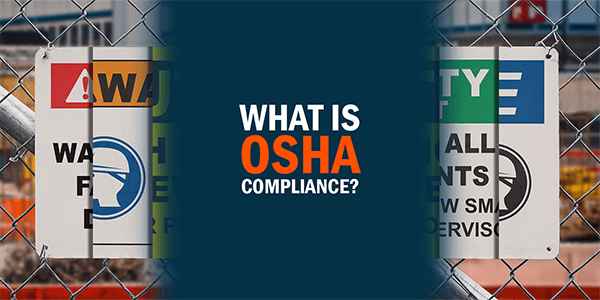
What is OSHA Compliance?
Dangerous working conditions nationwide sparked the creation of the Occupational Safety and Health Act (OSH ...
Read
Red Diamonds on HazCom 2012 Labels
Six elements of information must be present on the typical HazCom 2012 chemical label, as listed in OSHA's ...
Read
Understanding the SDS (Safety Data Sheet)
Chemical safety can be a massive puzzle, with a variety of interconnected elements: inventory lists, storage ...
Read
Hazard Pictograms
What are Hazard Pictograms? Hazard pictograms are graphic symbols used on GHS labels to communicate ...
Read
The GHS Framework: Labeling & Compliance
Every two years, the UN publishes a new revision of the Globally Harmonized System (GHS), a standardized ...
Read
How Warning Labels Help Manage Biohazardous Waste
There are an estimated 16 billion injections administered globally each year, and not all of the used ...
Read
GHS Purple Book
The GHS is described in a book, informally known as the "Purple Book." This book contains information on all ...
Read
What GHS Labels Mean for Ammonia System Safety
Why Are Low-Charge Ammonia Systems Safer but Still Dependent on Strict Safety Protocols? In refrigeration and ...
Read
Technology Shoring Up Oil, Gas Efficiency
New technology and its data are helping offshore oil and gas take safety and efficiency to new heights. ...
Read
Short Term Exposure Limit
People have long recognized that no substance is absolutely safe. The Swiss physician Paracelsus, who lived ...
Read
DOT Labels
49 CFR 172.400 specifies that Department of Transportation (DOT) Labels must be used for hazardous materials ...
Read
Explosive Hazard
A ranch worker was grinding a 300-pound gasoline tank late Wednesday when the tank exploded, killing the ...
Read
UN Revises GHS to Clarify Language
A UN panel has made an update to its Globally Harmonized System of Classification and Labeling of Chemicals. ...
Read
OSHA and Canada Partner for Chemical Labeling System
Canada and the United States have been working together to align their laws for classifying and labeling ...
Read
5 Ways to Avert Common Bio Waste Violations
There are clear guidelines that health care and lab workers must follow when handling biohazardous waste. ...
Read
REACH Training
REACH is an acronym for Registration, Evaluation, Authorization and restriction of Chemicals. REACH is a ...
Read
Labeling is Crucial: Safety in Bulk Chemical Handling
Safety in handling bulk chemical unloading is a procedure that requires careful work and optimal ...
Read
5 Easy Ways to Strengthen Bloodborne and Airborne Safety Management
Workplace exposure control plans are encompassing much more than in the past. How are workplaces mitigating ...
Read
The Importance of Chemical Risk Assessments
Chemicals are in use in workplaces every day. It is important to follow and maintain chemical safety for ...
Read
Get a Grip on Better Cold Storage Material Handling
Freezer warehouses and cold storage facilities are some of the most demanding workplaces. To meet new ...
Read
GHS Label Information
Appendix C to the 2012 (OSHA 1910.1200) Hazard Communication Standard (HCS) specifies the mandatory ...
Read
NFPA 704 Hazmat Diamond
NFPA 704 is titled "Identification of the Hazards of Materials for Emergency Response." NFPA 704 defines a ...
Read
Pipe Marking Basics: OSHA and ANSI/ASME Labeling Standards
Why Is Pipe Labeling Important for Facility Safety and Efficiency? Pipes can put people and facilities in ...
Read
Canada Aligns to GHS
OSHA announced a continued partnership with Health Canada to align U.S. and Canadian regulatory approaches to ...
Read
BS5609 Compliance and GHS
BS5609 is the British Standard for pressure-sensitive adhesive labels used for marine applications. Also ...
Read
Avert Chemical Safety Program Failures
Facilities that handle chemicals need to be aware of the potential hazards of each chemical. Part of ...
Read
Maintain Uniformity with DoD Labels
Military expectations are high when it comes to labeling products for MIL-STD-129 shipping and MIL-STD-130 ...
Read
Tips for Better Chemical Safety Management
Workplace chemical safety is all about understanding the risks and following proper protocol. Train and ...
Read
Popcorn Lung Spreads to Workers in Different Industry: Coffee Roasters
In 2000, workers at a Midwest popcorn processing plant began showing symptoms of bronchiolitis obliterans, a ...
Read
ALARP (As Low As Reasonably Possible)
What is ALARP? ALARP is the acronym for "As Low As Reasonably Possible," a principle primarily used in the ...
Read
Oil & Gas Industry Taps into New Future of Safety
The future of the oil and gas industry is facing rampant change, and safety is part of the discussion. ...
Read
Improper Hazardous Material Shipping is Costly
Every year, there are a list of companies that fail to properly ship hazardous material. Lapses in safety ...
Read
Improving Chemical Facility Safety and Security
The small town of West, Texas, will never be the same after April 17, 2013, when the community was deeply ...
Read
OSHA Rules for Hazardous Chemicals
When dealing with hazardous chemicals, safety is key. However, the steps necessary to keep workers safe will ...
Read
Elevate Your Safety Plan: Hierarchy of Hazard Control
There are five levels to the hierarchy of hazard control:
Read
Lab Safety Labels
Permanent Container Safety Labels OSHA requires employers to ensure that no worker uses, stores, or allows ...
Read
New EPA e-Manifest System for Electronic Hazardous Waste Tracking
To make the tracking process of hazardous waste more progressive and efficient, the EPA has begun ...
Read
49 CFR Transportation
CFR is the abbreviation for "Code of Federal Regulations." CFR 49 ? Transportation, contains nine volumes ...
Read
Hazardous Waste Symbols
Symbols and pictograms are the fastest, most efficient and reliable way to communicate warnings. People ...
Read
Occupational Exposure
The term "occupational exposure" refers to a potentially harmful exposure to hazards chemicals in the ...
Read
From MSDS to SDS
OSHA's HazCom 2012 rules require companies to have a Safety Data Sheet (SDS) for every hazardous chemical in ...
Read
Hazardous Waste Disposal
According to the Environmental Protection Agency (EPA), subtitle C of the Resource Conservation Recovery Act ...
Read
Hazardous Chemicals Overview
In the eyes of OSHA, hazardous materials run the gamut from household cleaners to deadly gasses. Effects can ...
ReadHOW CAN WE HELP?

Labeling Project Help
DuraLabel Product Support
Get help with DuraLabel products and support with using software. Making labels, troubleshooting, or product recommendations.
Visit Product Support Center
DURALABEL PRODUCTS
Are you ready to create your own signs and labels on-site and on-demand? Shop DuraLabel printers and supplies here!
.webp)
LABELING SOFTWARE
LabelForge PRO Software allows you to create custom labels from scratch or utilize templates and modules to be compliant

FREE LABEL SAMPLES
See the quality of tough-tested DuraLabel supplies for your self with free label samples.

DURANEWS NEWSLETTER
Free monthly newsletter from DuraLabel provides industry insights and compliance news that keeps you up-to-date in labeling.
.png)

